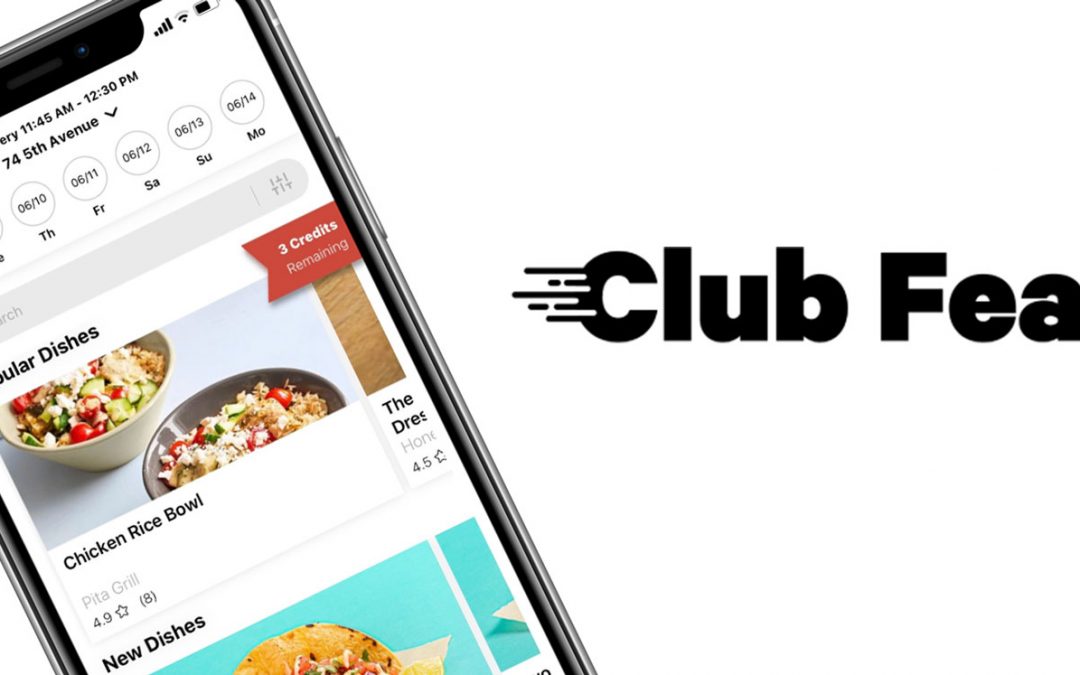Incremental is the word used all across the food delivery space. Third-party aggregators promise orders that restaurants never would have seen. It’s largely proven to be accurate, but Club Feast was built on the idea of creating incremental revenue on top of incremental orders.
Club Feast is one of the second-wave delivery platforms that are growing in key markets across the United States. It launched in July of 2020 with a core differentiation: forcing diners to plan ahead. Consumers are required to order either the night before or several hours prior to their meal. That allows operators to batch orders and do most of the prep work outside of typical peak hours.
“With the customer preordering, we give the restaurant a heads up so they can prepare this food with the exception of the final touches,” said Club Feast COO Ghazi Atallah. “Eighty percent of the food process is prep, and the final touches they can do in the last few minutes.”

Club Feast COO Ghazi Atallah
That pulls all the work out of those busy times when kitchens are at capacity already, when most incremental orders tend to come in.
“When an order comes during a peak time, it pushes the volume to 110 percent, but for us it’s the dead hours. This advantage is powerful. It’s actual incremental revenue,” said Atallah.
He said that’s the most important part, but said for the more than 600 restaurants on the platform in New York and the Bay Area, there are other benefits. Because orders are batched, there are fewer drivers waiting around in the restaurant, they come at a set time every day and they can do more orders. Atalla said drivers who sign up with Club Feast do four orders per hour, compared with 1.5 or two on other platforms. That makes the gig more efficient and reduces the environmental impact of driving, too.
At the consumer end, the company mantra is “Plan. Save. Eat.” and it advertises a 40 percent savings compared with traditional delivery aggregators. The value equation is one of the most challenging parts of the whole delivery space for the consumer, but the big question for operators was how does anyone make money? That was the first question for Emily Vilep, the owner of 7 Elephants, a Thai restaurant in New York.
“At first, I was skeptical. They asked us to sell at half price, how can we do that?” said Vilep.
She said there was a lot of flexibility and Atallah said they work with operators to figure out the right menu, then send them feedback to keep iterating. For Vilep, it was taking off some high-cost items and substituting in higher-margin items. For example, her standard menu item might have enough chicken for a second meal and costs $12, the Club Feast has a smaller portion of chicken and maybe some more rice or vegetables and sells on the platform for about $8 to $10 after delivery and pre-tip.
After that initial learning curve, she said it started to click and those slow hours became a little more active.
“After we tried them for a few months, we started to like it. it’s easy to plan everything. It’s like doing catering, it’s almost the same thing,” said Vilep. “We have the same item for like 10 dishes, so we can save time there.”
She said Tom Yum fried rice is a great example of something that works well on the platform. It’s a labor-intensive dish when it’s a single order, but in a big batch, it becomes a high-margin and popular item that travels very well. That’s what she sees in the feedback she gets every Friday, too. That’s another key differentiator for Atallah.
“When you get that, restaurants love it, they take that positive feedback and improve it,” said Atallah. “It’s very, very big. Since our inception, we said we would listen to the consumer. So, we show everyone the ‘why,’ when the food is quality the customer is happy, they’re more likely to try you again or try something from you again.”
Vilep said that has been the case so far. Customers like to pay about $10 for lunch, and many become frequent customers. She said she gets between five and 15 orders per day, and as some corporate business comes back to Manhattan, she sees more corporate catering orders. Atallah said across the platform, restaurants get an average of eight to 10 orders per day.
He said now that the system is largely figured out and the model has borne out in New York and the Bay Area, he’s ready to scale into some new markets through 2022 and further expansion in 2023.


